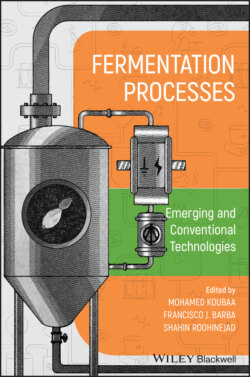Читать книгу Fermentation Processes: Emerging and Conventional Technologies - Группа авторов - Страница 14
1.1.5 Production of Microbial Plasmids
ОглавлениеThere has been a marked interest in the production of plasmids by fermentation (Carnes and Williams 2014; Carnes et al. 2006). Plasmids are self‐replicating extrachromosomal DNA molecules found in Gram‐negative and Gram‐positive bacteria as well as in some yeast and other fungi (Actis et al. 1999). To produce appreciable amounts, it is first necessary to introduce a plasmid of interest into microbial cells such as E. coli or S. cerevisiae. Subsequently, culturing these microorganisms in a bioreactor develops significant biomass. The plasmids then replicate independently in the new cells produced, and at the end of the fermentation, they are recovered and purified (Carnes and Williams 2014).
First developed in research programs in molecular biology and genetic engineering, plasmids are todays used in new applications of high technology such as in gene therapy (Sousa et al. 2009). Indeed, plasmids obtained by fermentation may contain therapeutic genes derived from the recombination of DNA that will be used to produce previously defective or nonexistent proteins to correct a genetic abnormality in a human organ. These plasmids are inserted into synthetic vectors and injected into the target cells of the affected organ by using particular techniques.
